#supplements to reduce inflammation in the body
Explore tagged Tumblr posts
Text
Top 7 Supplements to Reduce Inflammation in the Body Backed by Science
Curcumin, the active ingredient in turmeric, is one of the best anti-inflammatory supplements available. It has been shown in numerous studies to block NF-kB, a molecule that triggers inflammation.
0 notes
Text
𝐭𝐡𝐞 𝐮𝐥𝐭𝐢𝐦𝐚𝐭𝐞 𝐤𝐢𝐭𝐭𝐲 𝐜𝐚𝐫𝐞 𝐠𝐮𝐢𝐝𝐞 𝟏𝟎𝟏



listen up, pookie your kitty (yes, her) deserves to be treated like royalty. she works overtime for you, keeps you feeling good, and deserves top-tier maintenance. if you’ve ever wondered how to keep your girl fresh, healthy, and thriving, then sit back, grab some tea (preferably one that benefits her—more on that later), and let’s dive DEEP into the one and only guide you’ll ever need on vaginal health, hygiene, and overall reproductive wellness.
taking care of your kitty isn’t just about hygiene, it’s about honoring your femininity, connecting with your body, and embracing your divine energy. when she’s healthy, fresh, and balanced, you feel more confident, radiant, and in tune with yourself. a well-cared-for kitty enhances your sensuality, self-love, and overall well-being, making you feel empowered in your femininity. it’s an act of self-respect and self-care, a ritual that reminds you that your body is sacred. when you nurture her, you’re not just maintaining hygiene, you’re cultivating a deeper connection with your womanhood and stepping into your most powerful, feminine self.
1. internal care: what you put in is what you get out.
your kitty is a self-cleaning queen, but she still needs your help to stay in her best shape. what you consume directly affects her smell, taste, moisture, and overall health. let’s break it all down:
🎀 water is your bestie
first things first “drink your damn water, babygirl.” if your kitty has ever smelled a little “off,” felt dry, or just hasn’t been vibing right, chances are you’re dehydrated. dehydration leads to:
• stronger vaginal odors (not the good kind)
• increased risk of infections
• dryness and discomfort
how much should you drink? at LEAST 2-3 liters a day. and if you struggle with drinking plain water, add:
• lemon (helps balance pH)
• cucumber (hydrating AF)
• mint (cooling & refreshing)
🎀 lemon water = ph queen
starting your day with warm lemon water is a game changer. why?
• it flushes out toxins
• it helps balance your vaginal pH (prevents infections, odors, and irritation)
• it keeps your skin glowing (bonus win)
make it a daily ritual, and your kitty will thank you.
🎀 tea time = kitty care time
certain teas work wonders for your vaginal health. here are some of the best ones:
• ginger tea → reduces inflammation, fights infections
• red raspberry leaf tea → strengthens the uterus, great for periods
• chamomile tea → reduces bloating & period cramps
• green tea → full of antioxidants, helps with vaginal odor
sip on these daily and watch the magic happen.
🎀 probiotics: the real MVPs
your vagina needs good bacteria to stay healthy, and probiotics help maintain that delicate flora balance. if you’re prone to yeast infections, BV, or UTIs, adding probiotics to your routine is non-negotiable
best probiotic sources:
• greek yogurt (plain, no added sugar!)
• kimchi & sauerkraut
• kombucha
• probiotic supplements
🎀 best food for your kitty
pineapple
watermelon
strawberries & berries
coconut water
citrus fruits (oranges, lemons, limes, grapefruits)
plain yogurt (probiotic-rich foods)
cucumber
celery boosts pheromones and gives a clean, light scent.
ginger & mint.
pheromones are natural chemical signals your body releases that can subconsciously attract others and enhance your sensual presence. they play a huge role in sexual attraction, confidence, and even how people perceive you. the more balanced and active your pheromone production, the more naturally alluring, magnetic, and desirable you become.
foods to limit or avoid (can cause strong or unpleasant odors)
asparagus
onions & garlic
red meat
too much dairy
excess sugar & processed foods
alcohol & coffee
2. external care: keep her fresh & clean (but not TOO clean)
your kitty is a self-cleaning goddess, which means less is more when it comes to washing. over-cleansing, using harsh soaps, or douching = disaster. let’s talk about how to properly care for her.
🎀 washing: gentle, gentle, gentle
• use only warm water to wash your vulva (external area)
• if you need a cleanser, pick one that is pH-balanced and fragrance-free
• never wash inside your vagina (she cleans herself)
avoid:
• anything scented (no bath bombs, no perfumes, no harsh soaps)
• douching (throws off your pH and causes infections)
🎀 menstrual care: keep it fresh
your period is not dirty, but you need to maintain proper hygiene:
• change your pads/tampons every 3-4 hours
• if using a menstrual cup, sterilize it before and after each cycle
• wear breathable cotton underwear during your period
• drink iron-rich teas and foods to replenish nutrients
during your period, your body is already working hard to clean itself, so you don’t need to scrub down excessively. instead:
wash with lukewarm water & a gentle pH-balanced cleanser
avoid harsh soaps, fragrances, or douching — these strip your natural protective bacteria, making you prone to infections.
if you need a quick refresh, use unscented, pH-balanced feminine wipes (no alcohol, no fragrance!)
pads & tampons – change every 4-6 hours to prevent bacteria buildup. leaving them in too long can cause bad odors, irritation, and even infections.
menstrual cups – empty every 8-12 hours, wash with mild, unscented soap, and boil between cycles for proper hygiene.
drink 2-3L of water daily – helps flush out toxins and reduces bloating.
eat fresh fruits (pineapple, watermelon, oranges) – these keep your kitty’s natural scent light & sweet.
take probiotics (yogurt, kimchi, kombucha) – maintain a healthy vaginal pH & prevent yeast infections.
avoid too much caffeine, alcohol & processed foods – these can make you smell stronger and increase cramps.
drink herbal teas (ginger, chamomile, raspberry leaf) – these help relax muscles & ease cramps.
do light movement (yoga, stretching, walking) – keeps blood flowing & reduces bloating.
apply a warm compress or heating pad – this soothes your uterus & relieves pain.
take magnesium & vitamin B6 – these reduce cramps & mood swings.
cut down on salt & sugar – excess sodium & sugar make bloating & cramps worse.
🎀 underwear game: cotton only, babes
ditch the synthetic panties and switch to 100% cotton. why?
• it’s breathable
• reduces sweat buildup
• prevents yeast infections
also, sleep without underwear when possible, let your kitty breathe. (i don’t wear at home at all lol)
🎀 yoni steams: ancient but powerful
yoni steaming is an old practice that helps:
• cleanse the vagina and uterus
• balance hormones
• improve circulation
• relieve menstrual cramps
how to do it:
1. boil water and add herbs like mugwort, lavender, and rosemary.
2. sit over the steam (like a chair with a hole or squat over it but please don’t burn yourself, pookie).
3. let the steam cleanse and refresh your kitty for 15-20 minutes.
subliminal for yoni (listen whenever possible)
3. maintaining, tightness & strength
a strong kitty = better bladder control, better sex, and a healthier reproductive system. let’s talk about keeping her snatched and healthy.
🎀 kegels = tight & right
doing kegels daily helps with:
• stronger orgasms
• bladder control
• postpartum recovery
how to do it:
• squeeze your pelvic muscles (like you’re stopping pee)
• hold for 5-10 seconds
• repeat 10-15 times
do this every day, and you’ll notice a difference.
how to do kegels exercises?
pelvic exercises for women
🎀 waxing, shaving, or au naturel?
how you groom is completely your choice, but here’s the tea:
• waxing → lasts longer, reduces ingrown hairs
• shaving → quick but can cause irritation
• lasering → best long-term option, reduces hair permanently
• natural → totally fine but at least trim it time to time and clean it nicely to avoid any odour or infection
🎀 wipes: do we love them?
YES—but only the right ones.
• fragrance-free
• pH-balanced
• alcohol-free
use them after sex, gym sessions, or when you need a quick refresh.
4. sex & post-sex care: protect, cleanse, and glow
listen up, pookie—what happens in the bedroom affects your kitty’s health. whether you’re getting spicy on the regular or once in a blue moon, proper aftercare is a MUST. neglecting this step can lead to infections, irritation, or discomfort, and we don’t want that, do we?
always, ALWAYS pee after sex
i don’t care if you’re tired, cuddly, or just feeling lazy—get up and pee. this flushes out bacteria that might have entered your urethra, preventing UTIs (urinary tract infections).
wash her up (gently)
• rinse your vulva (external area) with warm water
• if needed, use a mild, fragrance-free cleanser
• pat dry with a soft towel—don’t rub! (also keep a separate towel only for her) (her means your vagina)
does pineapple really change taste?
yes and no. diet does influence how you taste down there, but it’s not just about pineapple. your diet plays the biggest role in how you taste. the goal is to eat foods that are light, fresh, and naturally sweet.
• sweet, hydrating foods = milder, pleasant taste
• too much processed food & dairy = stronger, unpleasant odor
foods that help:
drink at least 2-3L of water daily – keeps your juices light, clear & fresh.
add lemon or cucumber to your water – natural detox, makes your fluids lighter & more neutral.
drink coconut water – packed with natural electrolytes & lightens your natural taste.
chlorophyll water = internal deodorizer – helps your kitty and cum stay fresh & clean.
pineapple, mango, strawberries, watermelon – these are nature’s candy and make your cum sweeter & fruitier.
oranges, lemons, grapefruit – full of vitamin C, which neutralizes strong odors.
apples, grapes, kiwis – naturally sweeten your fluids.
cinnamon, honey, vanilla – add natural warmth & sweetness to your juices.
cucumber & celery – high in water & help flush out toxins, keeping you light & clean-tasting.
mint & parsley – natural breath & body fresheners.
sweet potatoes & yams – help maintain a balanced, natural sweetness.
foods to limit:
onions & garlic or strong spices
too much red meat and processed
alcohol and coffee
excess dairy
🎀 protect your pH: condoms matter
raw is fun and all, but if you’re not in a committed, tested relationship, you NEED protection. unprotected sex can:
• throw off your vaginal pH
• increase risk of infections (BV, yeast, UTIs)
• expose you to STIs plus girl you don’t wanna get pregnant especially if you’re not committed
if condoms make you itchy or irritated, you might be allergic to latex switch to non-latex condoms instead.
5. infections & odor: keep things fresh & problem-free
let’s be real sometimes, your kitty acts up. you might notice a smell, unusual discharge, or irritation. this is your body talking to you pay attention!
what’s normal vs. not?
your vagina has a natural scent—it’s NOT supposed to smell like flowers, vanilla, or candy (despite what some brands try to sell you). HOWEVER, extreme changes in odor can be a sign of something off.
when to worry:
❌ fishy odor → bacterial vaginosis (BV)
❌ strong, foul smell → possible infection
❌ yeasty, bread-like smell → yeast infection
🎀 infections 101: yeast, BV, and UTIs
(please go see a gynaecologist)
yeast infections
• symptoms: itching, thick white discharge (like cottage cheese), redness
bacterial vaginosis (BV)
• symptoms: fishy smell, grayish discharge, irritation
urinary tract infections (UTIs)
• symptoms: burning when peeing, constant urge to go, lower belly pain
6. gym, sweat & hygiene: stay fresh all day
your kitty is working overtime when you’re sweating it out at the gym. here’s how to keep her fresh, dry, and happy:
🎀 gym tips for vaginal health
• wear breathable cotton underwear or moisture-wicking fabrics
• change out of sweaty clothes ASAP
• wipe down with pH-balanced wipes after workouts
• carry baby wipes for quick fresh-ups
7. pregnancy, birth control & hormones: long-term kitty care
your reproductive health is more than just hygiene. hormones, birth control, and pregnancy all play a role in vaginal health.
🎀 birth control & vaginal health
obviously there are so many different types of birth controls like hormonal birth controls like pills, shots, etc. even non-hormonal birth control like using of condoms, copper iud etc. all of them have their own set of advantages and disadvantages so please please please chat with your dermatologist which is well suited for your needs and body
🎀 pregnancy changes everything about your kitty—expect:
• increased discharge (normal, but should be clear/white) and even month long periods (my mom faced this)
• higher risk of yeast infections
• vaginal stretching (kegels help postpartum recovery!) ask your gynaecologist when to start cause possibly your vagina tears during parturition (delivery)
8. womb care
whether you’re planning to have kids one day or just want to keep your reproductive system strong and healthy, taking care of your kitty and womb right now is one of the best things you can do. think of it like preparing a garden: the healthier the soil (your body), the better the flowers (your future pregnancy and baby). even if you’re not sexually active yet, you can build a strong, fertile, and balanced reproductive system so that when the time comes, you have an easy, smooth pregnancy and a strong, healthy baby.
your hormones control everything. your period, ovulation, fertility, and even your mood. keeping them balanced now will make pregnancy much easier later.
eat hormone-balancing foods
• healthy fats: avocados, salmon, olive oil (support hormone production).
• leafy greens: spinach, kale, broccoli (flush out excess estrogen).
• seeds: flaxseeds, pumpkin seeds, sesame seeds (help regulate your cycle).
reduce stress
• high stress = high cortisol, which can mess with your fertility.
• try meditation, journaling, or long walks to calm your nervous system.
limit processed foods & sugar
• too much sugar can cause hormonal imbalances & irregular periods.
avoid plastic food containers & BPA
• these contain chemicals that mess with your hormones & fertility.
tip: try seed cycling (eating specific seeds during your menstrual cycle) to keep your hormones naturally balanced.
maintain a balanced vaginal pH (3.8-4.5)
• drink water with lemon to help detox & balance your system.
• take probiotics (yogurt, fermented foods, or supplements) to maintain good bacteria.
• avoid harsh soaps, scented products, & douching—these strip away natural protection.
practice proper menstrual care
• switch to organic pads or tampons (regular ones have chemicals that disrupt vaginal health).
• if using a menstrual cup, clean it properly to avoid infections.
protect your womb
• avoid sitting on cold surfaces for too long (cold affects circulation to your uterus).
• practice yoni steaming with gentle herbs like lavender, rosemary, & chamomile to cleanse your womb.
EAT FERTILITY-BOOSTING FOODS
• avocados → full of folate, which is essential for pregnancy.
• eggs → contain choline, which helps with baby brain development.
• berries (strawberries, blueberries, raspberries) → full of antioxidants that protect your eggs.
• walnuts & almonds → improve egg quality.
• leafy greens (spinach, kale, broccoli) → rich in iron & folate.
DRINK WOMB-FRIENDLY TEAS
• raspberry leaf tea → strengthens the uterus & prepares it for pregnancy.
• ginger tea → reduces inflammation & improves blood flow to your womb.
• nettle tea → full of minerals to keep your reproductive system strong.
AVOID FERTILITY-KILLERS
too much caffeine (it affects egg quality).
alcohol & smoking (lower fertility & harm future pregnancy).
too much processed food (affects your hormone balance).
START TAKING PRENATAL VITAMINS EARLY
prenatal vitamins aren’t just for when you’re pregnant—they help prepare your body years before conception.
folic acid (B9) → prevents birth defects & supports healthy eggs.
iron → prevents anemia & strengthens the uterus.
vitamin D → improves fertility & hormone balance.
omega-3s (DHA & EPA) → support baby’s brain & eye development.
final words: love your kitty, and she’ll love you back
babygirl, your kitty is a queen and deserves royal treatment. stay hydrated, balanced, and mindful, and she will always be fresh, tight, and healthy.
this guide? your new bible. bookmark it, re-read it, and share it with your besties. your kitty care era starts NOW.
#girlblogging#dream life#empowerment#levelling up#manifestation#manifesting#love#aesthetic#flowers#gaslight gatekeep girlboss#girlboss fr#becoming that girl#just girlboss things#it girl#hygiene#female beauty#devine feminine#higher self#self care#self love#self help#self improvement#that girl#becoming her#becoming the best version of yourself#positivity#positive thoughts#natural body#body positive#body posititivity
2K notes
·
View notes
Text
Stem Cell Scientist Reveals what the # 1 supplement people should take...
THE MIRACLE PLANT HAS BEEN SHOWN TO FIGHT OVER 300 DISEASES and reduce your risk of cancer, diabetes, and arthritis by 60% in just 2 months!
Moringa is full of cytokinins that are significantly slowing down the aging process, help renew every cell of the human body - making people look and feel decades younger!!! 🧬
The high amount of polyphenols reduces the inflammation by 95%, accelerates the anti-aging process and of course makes you resilient to viruses and illnesses!🧬
It’s the ultimate anti-inflammatory, anticancer, and immune-boosting superfood, proven to inhibit tumor growth and restore healthy cells. If you’re struggling with chronic illness, Moringa could be the lifeline you’ve been waiting for. 🤔
#pay attention#educate yourselves#educate yourself#reeducate yourselves#knowledge is power#reeducate yourself#think about it#think for yourselves#think for yourself#do your homework#do your own research#do some research#do research#ask yourself questions#question everything#moringa#for your health#health tips#healthy living#natural remedies#healing#self healing#self help#self improvement#self love
197 notes
·
View notes
Text

Dolly's guide to glow this summer ✨🐬

visualize 💭
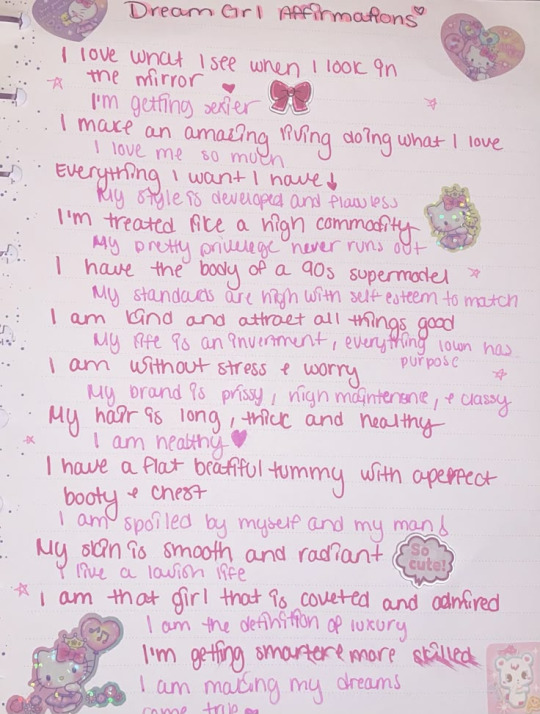



We all have that dream version of ourselves living in our heads, but with school and work, it can be tough to actually bring her to life. Now that classes are wrapping up and summer’s right around the corner, it’s the perfect time to start becoming her 🎀
Pinterest and Canva are amazing tools when it comes to figuring out your vibe. When you’re scrolling through Pinterest, don’t just save the first cute thing you see. Instead, ask yourself things like: “What would she wear?” “How does her hair look?” “What’s her everyday makeup?” Thinking this way helps you build a clear, consistent aesthetic to aim for.
For the next part, grab that cute notebook you’ve been saving because now’s the time to finally use it. Grab a pen in your fave color and start by answering these:
How does she talk?
What are her core values?
What’s a day in her life like?
move move move 🛼




The fastest way to bring out your inner glow is by moving your body. When you move, you increase blood flow and sweat, which helps flush out toxins and improve circulation. This, in turn, reduces inflammation and gives you that radiant glow🌟
One of the best things about summer is that there are so many fun ways to get active—it’s easier to sweat and feel good. Whether it’s a 30-minute walk or a 1-hour gym session, simply moving your body is already a win. Below, I’ll list some cute and easy ways to get moving:
Hot girl walks🌸 – Put on a cute outfit, turn on your fave playlist, and stroll around your local park or neighborhood.
Incline walking on the treadmill – A great alternative if you’d rather stay out of the sun but still want the benefits.
At-home Pilates & workouts – Throw on a cute set and follow a YouTube tutorial (just make sure the instructor is certified). Below are some of my fave channels!!
https://www.youtube.com/@DaisyKeech
https://www.youtube.com/@MadeleineAbeid/videos
https://www.youtube.com/@MoveWithNicole
https://www.youtube.com/@LillySabri
nourishment 🥒

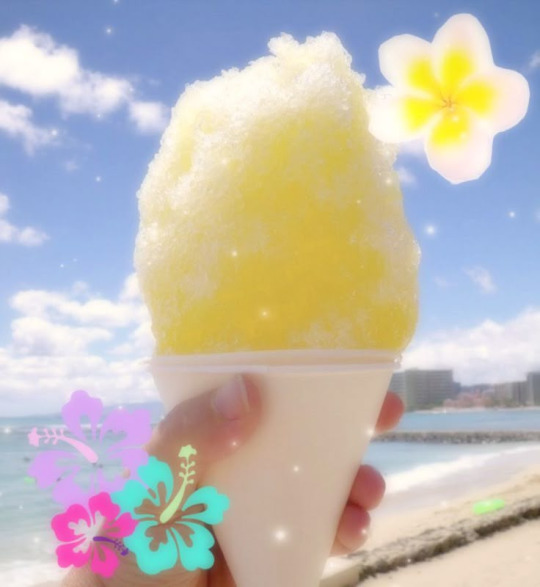


The key to keeping that inner glow shining really comes down to your diet. When you regularly eat ultra-processed foods and lots of sugar, your body will show it, whether you want it to or not. This can lead to persistent low mood, continuous breakouts, and even premature aging. To fight back, focus on eating a diet full of fruits, veggies, and healthy fats. ✨
Here are a few tips to help glow from the inside out:
Struggle with getting in fruits & veggies? Try making a smoothie or looking into supplements—but always talk to your doctor first so you’re not taking anything unnecessary or harmful.
Add collagen & omega-3-rich foods like bone broth, chicken skin, salmon, and citrus fruits. These support skin health and boost elasticity.
Green tea + kombucha = goddess glow🌟 They’re packed with powerful antioxidants that help reduce inflammation, protect your cells, support gut health, and just overall benefit your health.
The (not so) secret to keeping your skin glowy and juicy is hydration!!! You need to stay hydrated both inside and out to get that natural radiance. When your body is well-hydrated, your circulation improves, more nutrients are delivered to your skin and cells, and toxins get flushed out. Below are some ways to stay hydrated:
Eat more water-rich fruits and veggies like strawberries, watermelon, cucumber, cantaloupe, lettuce, and spinach.
DRINK YOUR WATER!!!💦 If you struggle with plain water, try adding the mentioned fruits and veggies for a light, refreshing flavor (cucumber & strawberries are my faves) You can also use electrolyte powders, my top rec is the one from Ultima.
Alternatives If I’m not in the mood for water, I’ll also go for coconut water, tea, or 100% fruit juice (make sure it’s not from concentrate!).

skin 🧖♀️




When it comes to soft, shiny skin, exfoliation + hydration is the ultimate duo (with consistency of course) I like to focus on hydration during the day and exfoliation at night, since your skin is more sensitive to the sun after exfoliating.
DRY BRUSH, DRY BRUSH, DRY BRUSH!!! I've seen such a drastic difference in my skin texture since doing it consistently, especially paired with a good scrub.
About body scrubs... I know it hurts to hear this, but ditch the sweet scented ones and invest in a good chemical body scrub with AHA, BHA, or glycolic acid. They penetrate the skin and dissolve dead skin cells more efficiently and promote cell turn over leading to smoother & brighter skin.
If you’re prone to dry skin like me, skip the pricey body oils and pick up a petroleum based product like Vaseline or Aquaphor. Petroleum creates a barrier that locks in moisture, effectively preventing moisture loss and it works so well.
SPF!!!!!!!☀️I cannot stress this enough—protect your skin, always.
This is the first time i've ever made a long post like this, i hope it was helpful !!! please reach out if you have any questions, stay gorgeous dolls 🐬🫧🌸


#𝓅𝓌𝓃𝒸𝑒𝓈𝓈 𝓉𝒶𝓁𝓀 ྀི#hyper femininity#it girl#dolly aesthetic#key west kitten#just girly things#girly girl#girlblogging#coquette#pink pilates princess#self improvement#glow up#self care#self growth#coqeutte#self love#virtual doll#becoming that girl#dream girl#self confidence#self concept
92 notes
·
View notes
Text
Let’s talk Health



So guys, i am turning 29 in a month and let’s be real my body is not what it used to be! Despite me working out 4times a week, fasting, and paying attention to what i eat, i can feel my body weakening in way. Not that i don’t feel healthy but I’m still having some back pain, less energy, and just like feeling my body more. And that is normal.
20 years old me and 30 years old me wont be the same! There are things that we need to do to keep up so we maintain our best self. My body wont be producing all the collagen that i use too, likes guys i can hear my BONESSS! And I’m telling that is is not giving!
After a bit a research, i realized that i was lacking nutrient that my body could not produced on it’s own or way less!
So here a list of Nutrients we need as bad gyals hitting our 30s, especially as black women
1. Vitamin D 🌞
Why? Black women are more likely to have vitamin D deficiency due to melanin reducing sun absorption. Low levels can affect bone health, immunity, and mood.
Sources: Sun exposure (15–30 mins/day), fatty fish (salmon, mackerel), fortified foods (milk, orange juice), and supplements (2,000 IU daily if deficient).
2. Iron 💪🏾
Why? Many Black women experience iron deficiency, which can lead to fatigue, hair thinning, and anemia.
Sources: Lean meats, beans, lentils, spinach, tofu, fortified cereals. Pair with vitamin C (oranges, peppers) to boost absorption.
3. Magnesium 🧘🏾♀️
Why? Supports stress management, sleep, muscle function, and heart health. Many people don’t get enough.
Sources: Nuts, seeds, whole grains, dark leafy greens, dark chocolate.
4. Calcium 🦴
Why? Helps prevent osteoporosis, which Black women are at higher risk for later in life.
Sources: Dairy, leafy greens, almonds, fortified plant-based milks.
5. Omega-3 Fatty Acids 🧠
Why? Supports heart, brain, and joint health while reducing inflammation.
Sources: Salmon, sardines, walnuts, flaxseeds, chia seeds, omega-3 supplements.
6. B Vitamins (Especially B12 & Folate) ⚡
Why? Helps with energy, brain function, and red blood cell production.
Sources: Eggs, fish, meat, leafy greens, fortified grains, and B-complex supplements if needed.
7. Collagen & Vitamin C ✨
Why? Supports skin, hair, nails, and joint health.
Sources: Bone broth, citrus fruits, bell peppers, berries, collagen supplements.
8. Fiber & Probiotics 🥗
Why? Supports gut health, digestion, and weight management.
Sources: Whole grains, beans, vegetables, yogurt, kefir, and fermented foods.
9. Zinc & Selenium 💁🏾♀️
Why? Supports immune function, hair health, and thyroid balance.
Sources: Shellfish, nuts, seeds, Brazil nuts, and meat.
Supplement Recommendations:
Multivitamin for Women (with iron, D, and B vitamins)
Vitamin D3 (if deficient)
Omega-3 Fish Oil
Magnesium Glycinate (for stress & sleep)
Probiotic (for gut health)
Hope this helps my lovesss, until next time
#becoming that girl#girlblogging#manifesting#dream girl#self care#self improvement#digital journal#late twenties#black girls of tumblr#it girl#self growth#body sculpting#self obsessed#self love#becoming the best version of yourself#health & fitness#healthcare#pinkcore#work in progress#positive thinking#hyper feminine#feminine energy#divine feminine#goddess energy#law of assumption#girl core#im just a girl#goddess#girl blogger#body care
98 notes
·
View notes
Text
LOWERING YOUR CORTISOL LEVELS: THE MAIN STRESS HORMONE
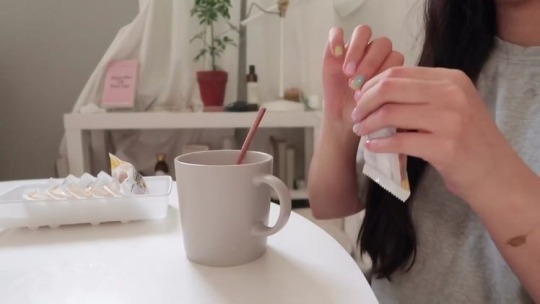
Hi lovelies! If you didn’t know, cortisol is the main stress hormone of your body. Cortisol is a good thing for our bodies, it manages how our body uses carbs, fats or proteins, keeps inflammation down, regulates your blood pressure, increases glucose, controls your sleep cycle and boosts energy for when you have high levels of stress.
However, your body can produce too much unnecessary cortisol which is when it can start taking a toll on us, leading to
Anxiety or depression
Headaches
Heart diseases
Memory problems
Trouble staying focused
Digestive complications
Sleeping complications
Weight gain/loss
and more!
below the read more, there’s ways to lower and regulate our cortisol levels <3
getting adequate sleep
Prioritising and optimising our sleep is already beneficial for us, but it can help with lowering our cortisol levels. To make the most of your sleep, have an winding down routine, sleep and wake at similar times everyday, limit your caffeine intake(including soft drinks!) and reduce your screen time before you go to bed.
Moderate intensity exercise
Too intense exercise or no exercise, can increase the levels of cortisol but intense exercise usually has a temporary effect. It helps with managing our stress better and promotes better sleep which also helps with lowering your cortisol levels.
Practise deep breathing and meditation
This time to clear our minds, helps stimulates our resting & digest system in us. (Parasympathetic nervous system). You can do this wherever, whenever.
Eating a nutritious diet
Only you know what’s the best diet that suits your lifestyle, so I won’t say much about this, but make sure that you’re getting quality nutrition in your body.
Take your supplements
Make sure you talk to your doctor before taking any supplements! Before you consider taking any supplements, do some individual research first.
#prettieinpink#glow up#glow up era#becoming that girl#green juice girl#clean girl#pink pilates princess#girlblogger#self improvement#wellness#wellness era#health#physical health#self love#self care#self development#girl blogger#just girly things#girl blog#self healing#healing#healing journey
764 notes
·
View notes
Text

My (not really) Guide to Herbs,
Every herb you hear about, learn about. All have specific and different properties that were used in many holistic approaches, and before medicine was easily accessible.
Learning the properties is very essential to even touching herbs. It's important to note that not every herb can be good for you. Disinformation is readily accessible with using the wrong image or name of an herb.
Foraging
Never. Forage. Without. Doing. Extensive. Research.
Pick up foraging books, take classes, ask foragers in your community, learn how to feel safe in the woods, and how to protect yourself. Foraging is VERY different than just buying herbs in stores or from trusted online shops. If someone tells you 'foraging is easier', it's because it's easier for them. That's their path, and if your path is just buying herbs from the dollar store, who cares. It's about accessibility in your practice.
Medicinal herbs
Yes, knowing how herbs are used in witchcraft is well, essential. But let's not forget some of the other properties it can have. Now, what exactly IS herbal medicine?
Medicinal herbs are plant-based products used to maintain health or prevent diseases. This can also be called herbal supplements, and these come in many different forms.
dried up
powder
chopped
capsule
liquid
But, how do I use them in these ways outside of spells?
Swallowing the pills, powder, or liquid
Brewing as tea
Used as skin gels, lotion, or cream
Bath water
CAUTION !!!!!
I am by no means someone who is in medical school. Please do your own further research into herbal supplements, especially if this is for consumption. If you ARE buying supplements, know that many of these are not looked at more thoroughly through the FDA because they are plants.
HERBS
Just a few of the common ones.
Chamomile (Flower)
Used to help with anxiety and relaxation.
Most commonly used in tea.
Garlic (Cloves, root)
Used to help fight germs, protect your heart, and reduce inflammation.
Most commonly used in cooking.
Ginger (Root)
Used to help easing nausea and motion sickness.
Most commonly used in cooking.
Lavender (shrub)
Used to help treating insect bites and burns, cleaning wounds, promoting sleep, improving memory, relieving pain, and uplifting mood.
Most commonly used in perfume, tea, and essential oil.
Rose Petals (flower)
Used to help digestion, contain pain relieving properties, and supporting a positive mood
Most commonly used in tea, skincare, bath soaks, face masks, candles, and cooking.
Kiwi Fruit Powder (fruit)
Used to help maintain a healthy skin tone, digestion, boosts immunity, and contains essential nutrients like vitamin C and potassium.
Most commonly used in cooking and drinks.
Okay, but why? is this important.
Many of us believe in the properties that herbs can have in spells and spirituality. It's also important to learn the other ways that these herbs you use in spirituality can have on your own body. Why not make a healing tea? A balm or lotion with protection and medicinal properties in it?
I don't believe in limiting my knowledge to only one use. If theres many uses to one thing, why not use it for two things at once? I'm having bad anxiety? Let me use Chamoile for that and Rosemary for protection. I'd be targeting the physical and spiritual manifestation that I think is something we dont ultize enough in witchcraft.
It's important (to me) that herbs can be used in your daily life to aid you in both ways, so why limit your knowledge to only one use?
#spiritual journey#witchblr#witchcraft#witch#paganblr#herbs#herbalism#herbal tea#paganism#pagan witch#pagan
34 notes
·
View notes
Text
Also preserved in our archive (Daily updates!)
Published Sept 3, 2024
By Chuck Dinerstein, MD, MBA
New research reveals that fibrin, a key component of blood clots, may be the secret culprit behind the devastating neurological and inflammatory aftermath of the virus, including long COVID. From dense, stubborn clots to brain fog, the interaction of COVID’s spike protein with fibrin could be the missing link — and a potential target for life-saving therapies.
Coagulopathy, the formation of small blood clots that go on to wreck respiratory and neurologic havoc, has long been a clinical hallmark of COVID, and now it's oft-ignored Long COVID. A new study suggests that fibrin, a key component of blood clots, plays a role.
Fibrin provides structure to a blood clot and is derived from fibrinogen, a soluble blood protein when the coagulation cascade is activated. If you think of a blood clot as nature’s way of plugging a leak, fibrin deposition is frequently found where there is damage to the walls of blood vessels and the vessels making up the blood-brain barrier. Fibrin serves as a plug and a signal for a greater inflammatory and immune response.
Given the unique clinical presentation of clotting in COVID compared to other respiratory viruses, the researchers hypothesized that COVID directly binds to fibrinogen, promoting blood clot formation and altering clot structure and function. They found that the spike protein of the virus binds to fibrinogen and fibrin at specific binding sites, suggesting that the virus might contribute to abnormal clotting by interacting with fibrinogen.
They found that the spike protein altered the structure of clots, making them denser and more resistant to the body’s natural means of removing clots, a process called fibrinolysis. Additionally, the spike protein enhanced the inflammatory signals from fibrin, increasing oxidative forces (reactive oxygen species or ROS) released from macrophages, a first responder of the immune system.
In converting fibrinogen to fibrin, the spike's binding site (epitope) is exposed. Therapeutically, having identified binding regions, the research found that antibodies could disrupt and reduce these pro-inflammatory effects implicated in acute and long COVID. Among the inflammatory effects reduced by blocking the actions of fibrinogen was the deposition of collagen in the lungs, which creates a barrier to oxygen passage and helps to explain the refractory response to supplemental oxygen we have seen in patients.
Fibrin also suppresses natural killer (NK) cells, which are called "natural killers" because they can recognize and kill stressed cells without prior exposure to a particular pathogen, making them critical first responders. The suppression of NK cell activity results in enhancing viral persistence and lung inflammation.
In additional studies in mice, the researchers found that this fibrin-dependent inflammatory response occurs independently of the active virus, suggesting a potential mechanism for persistent symptoms in Long COVID. [1] Therapeutically, in their mouse model, the use of a monoclonal antibody targeting the fibrin epitope, in addition to reducing the lung’s inflammatory response, reduced neuroinflammation (associated with long COVID’s brain fog). There were reductions in fibrin deposition and microglial reactivity “leading to improved neuronal survival and reduced white-matter injury.” Microglia are the primary immune cells of the central nervous system.
To summarize:
Coagulopathy in COVID-19 is a primary driver of thrombo-inflammation and neuropathology rather than a consequence of systemic inflammation. Fibrin plays a causal immunomodulatory role in promoting hyperinflammation, neuropathological alterations, and increased viral load in COVID-19 by modulating NK cells, macrophages, and microglia. Elevated fibrinogen levels and BBB permeability in COVID-19 contribute to neuropathology, and targeting fibrin may offer a dual mechanism of action by inhibiting fibrin-spike interactions and exerting anti-inflammatory effects. A fibrin-targeting antibody effectively blocks many pathological effects of fibrin, providing neuroprotection and reducing thrombo-inflammation. Their findings have limitations, including how they measured changes in brain tissue, the use of mouse models, and the fact that our inflammatory response may have more than one pathway that results in COVID-19’s deleterious effects. For Long COVID, the fibrin-targeted antibody does not interfere with normal clotting, acting solely on fibrin's inflammatory responses, making it a candidate to protect against pulmonary and cognitive impairment; that will, of course, require clinical trials.
And there you have it—the silent saboteur behind the lingering specter of Long COVID. Fibrin is not just a bystander in the aftermath of COVID-19; it's a key player driving the chronic symptoms that continue to baffle patients and clinicians alike. The discovery that the virus’s spike protein meddles with fibrin, transforming it into a resilient, inflammatory force, opens a new frontier in the fight against the pandemic’s long tail. The research, though groundbreaking, is still in its early days, confined to animal models, and the complexities of human biology could introduce new challenges.
But if the science holds, targeting fibrin could offer a two-for-one punch against the clotting and inflammation that underpin much of the damage COVID-19 leaves in its wake. For the millions grappling with the enduring effects of Long COVID, this could be a glimmer of hope—a chance to reclaim their lives.
[1] The inquisitive with a conspiratorial bent might link these inflammatory responses in the absence of infection to deaths felt to be due to the COVID vaccines, which employ the spike as antigenic stimulus. The researchers note that most hematologic changes are triggered by the vaccine vector (an adenovirus) and that “COVID-19 RNA vaccines lead to small amounts of spike protein accumulating locally and within draining lymph nodes where the immune response is initiated, and the protein is eliminated.”
Source: Fibrin drives thrombo-inflammation and neuropathology in COVID-19 Nature DOI: 10.1038/s41586-024-07873-4 www.nature.com/articles/s41586-024-07873-4
#mask up#wear a mask#public health#pandemic#covid#covid 19#wear a respirator#coronavirus#still coviding#sars cov 2#fibrin#long covid#brain fog#chronic illness
87 notes
·
View notes
Text

I don't know much about 'skin things' but I do have a little bit of information on it for those who are interested! (I hope you don't mind me using your comment). I'll be supplementing my knowledge with some research under the read more.
Skin grafting is a dermatological procedure utilized to facilitate wound closure.
We'll talk about some commonly used techniques:
1. Split-Thickness Skin Grafts (STSG) are composed of the epidermic and a superficial part of the dermis. These grafts are commonly used to cover large wounds, burns, and areas of skin loss. They are thinner than full-thickness grafts, which allows them to cover larger areas.
2. Full-Thickness Skin Grafts (FTSG) contain both the full epidermis and the dermis. These grafts are typically used for smaller wounds in areas where aesthetics and durability are essential, such as the face, hands, or neck. Since FTSGs retain the full dermal layer, they offer better cosmetic outcomes, including improved texture, pigmentation, and reduced scarring compared to split-thickness grafts. They also tend to resist contracture better, making them ideal for regions requiring flexibility. - FTSGs are more complex because they require a well-vascularized wound bed to survive and heal. - FTSGs are the most commonly used graft.
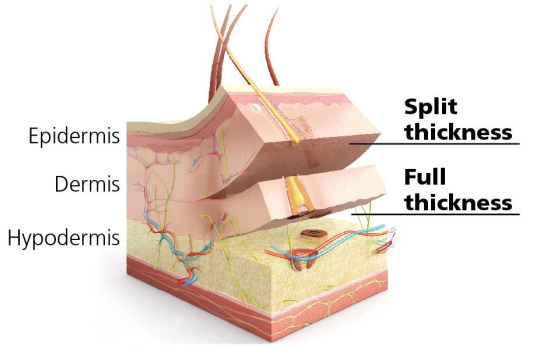
3. Composite Skin Grafts are usually small and include a combination of skin and underlying tissues, such as fat, cartilage, or muscle. These grafts are used to reconstruct areas where multiple tissue types are needed to restore both form and function, such as the nose, ears, or fingertips. - Composite skin grafts which combine allogeneic dermis and an expanded autologous epidermis can effect rapid wound closure.

It is further broken down by the following:
Permanent Skin Grafts
1. Autografts (autologous graft): skin collected from the patient 2. Isograft (syngeneic graft): skin collected from a genetically identical donor (twin)
Temporary Skin Grafts
1. Allocrafts (heterologous graft): skin from a cadaver (living donors are possible) 2. Xenograft (heterograft): skin from another species
Can be Temporary OR Permanent
1. Synthetic skin substitutes: use of manufactured skin - The only technique that is permanent is cultured epithelial autograft (CEA), which is essentially a skin graft grown from a patient's own skin cells.
NO NON-SELF TISSUE IS GUARANTEED TO COMPLETELY AVOID DEATH OR REJECTION.
Transplant Rejection: a patients immune system identifies the graft as a foreign body, which triggers an immune response to get "rid" of the tissue.
Skin implant compatibility is based on three highly polymorphic MHC genes (HLA-A, HLA-B, and HLA-C) that encode proteins and are a part of the Human Leukocyte Antigen (HLA) system. This system identifies foreign bodies.
Knowing this, the use of modified donor animals, such as pigs, to provide transplantable organs, is gaining some renewed research. It involves excising the genes in the pig that are most responsible for the rejection reaction after transplantation. However, finding these genes and effectively removing them is a challenge.
The use of autologous skin grafts is the most common approach in the treatment of chronic wounds. However, in the case of deep and/or large wounds or with extensive severe burns, the use of autografts is limited, and either allogeneic (from cadaver) or xenogeneic skin grafts are used for transplantation.
The use of allogenic/xenogenic tissue carries a high risk of graft rejection, limiting their clinical applications.

Tissue Engineering
Advanced therapies for chronic wounds involve application of bioengineered artificial skin substitutes to overcome graft rejection as well as topical delivery of mesenchymal stem cells to reduce inflammation and accelerate the healing process.
Photo shows potentially ideal artificial skin graft:
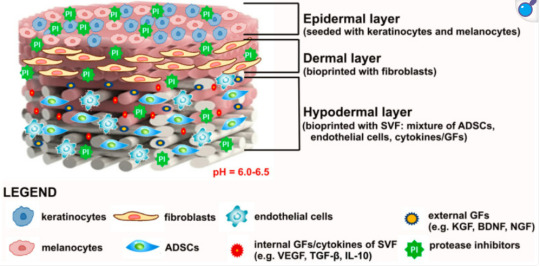
Modern treatment includes skin tissue engineering aiming to produce bioengineered biomaterial-based artificial skin grafts. Therefore, the main roles of bioengineered skin grafts is to supply oxygen (by being oxygen permeable), keep the wound from dehydration, promote healing, and prevent infections. - Depending on the type of biomaterial used for the production of artificial skin grafts, they may function as skin equivalents providing temporary wound covers or permanent skin substitutes. - When the biomaterials are pre-seeded or have cells incorporated within their matrix, they are classified as cellular artificial skin grafts, whereas biomaterials without or deprived of cells are defined as acellular artificial skin grafts.
Here are some current commercially available synthetic skin grafts I found applicable to Curly's injuries:

Definitions for Clarity: 1. Epidermal: Pertaining to the outermost layer of the skin. 2. Cellular Content: the complex structures and biomolecules that make up cells, the smallest units of life. 3. Acellular: not consisting of, divided into, or containing cells. 4. Fibroblasts: a cell in connective tissue which produces collagen and other fibers. 5. Keratinocytes: an epidermal cell which produces keratin (a fibrous protein forming the main structural constituent of hair).
Articles to Reference
Organ Transplantation and Rejection by Libretexts biology. LINK
(CW: Images) Skin Grafting by Joseph Prohaska and Christopher Cook. LINK
A Concise Review on Tissue Engineered Artificial Skin Grafts for Chronic Wound Treatment: Can We Reconstruct Functional Skin Tissue In Vitro? by Agata Przekora LINK
Composite skin graft: frozen dermal allografts support the engraftment and expansion of autologous epidermis by E L Heck, P R Bergstresser, C R Baxter LINK
#curly mouthwashing#mouthwashing#mouthwashing theories#leo vomits medical jargon#i didnt proof read this if there are errors you dont see them
26 notes
·
View notes
Text
Life hack: belance in yourself

Hormones are powerful chemical messengers produced by glands in the endocrine system. They travel through the bloodstream, regulating various bodily functions such as growth, metabolism, reproduction, and mood. Hormones play a significant role in maintaining balance in the body, known as homeostasis, and any imbalance can affect your mental and physical well-being.
How Hormones Work
Production: Hormones are secreted by glands like the thyroid, adrenal glands, pancreas, and ovaries/testes.
Transport: Once produced, hormones travel through the bloodstream to target cells or organs.
Receptors: Hormones bind to specific receptors on cells, triggering a response. This can involve altering cell activity, gene expression, or initiating a cascade of processes.
Feedback Mechanism: The body monitors hormone levels using feedback loops. For example, if a hormone level is too high or low, the body adjusts production to maintain balance.
Key Hormones and Their Functions
Cortisol: Stress hormone; regulates metabolism, immune response, and energy.
Serotonin and Dopamine: Mood and happiness regulators; linked to emotional well-being.
Insulin: Manages blood sugar levels.
Estrogen and Testosterone: Sexual health, energy, and bone strength.
Thyroid Hormones: Control metabolism and energy levels.
Melatonin: Regulates sleep-wake cycles.
Adrenaline (Epinephrine): Prepares the body for fight or flight.

How to Support Hormonal Health
To feel better mentally and physically, it’s essential to maintain hormonal balance. Here are strategies to care for your hormones:
1. Nutrition
Balanced Diet: Eat whole, unprocessed foods rich in nutrients.
Healthy Fats: Avocados, nuts, seeds, and omega-3s (from fish) support hormone production.
Complex Carbs: Whole grains and vegetables regulate insulin levels.
Protein: Essential for hormone production; include lean meats, beans, and tofu.
Avoid Excess Sugar and Refined Carbs: These can cause insulin spikes and crashes.
Hydration: Proper hydration supports cellular communication and detoxification.
2. Sleep
7-9 Hours of Quality Sleep: Hormone regulation (like melatonin and growth hormone) occurs during deep sleep.
Consistency: Go to bed and wake up at the same time daily.
Limit Screen Time Before Bed: Blue light can suppress melatonin.
3. Stress Management
Mindfulness Practices: Meditation, yoga, and deep breathing reduce cortisol levels.
Physical Activity: Exercise releases endorphins, improving mood and balancing stress hormones.
Journaling or Therapy: Helps process emotions, reducing chronic stress.
4. Exercise
Moderation: Both too much and too little exercise can disrupt hormones. Aim for 30 minutes of moderate activity most days.
Strength Training: Boosts testosterone and growth hormone.
Cardio: Supports circulation and reduces stress.
5. Avoid Endocrine Disruptors
Limit Toxins: Avoid products with BPA, phthalates, and parabens (found in plastics and cosmetics).
Clean Water: Use filtered water to avoid contaminants.
Organic Foods: Reduce pesticide exposure, which can disrupt hormones.
6. Maintain a Healthy Weight
Excess body fat can increase estrogen levels, while too little fat can disrupt reproductive hormones.
7. Regular Medical Check-Ups
Hormone Testing: Regular blood tests can identify imbalances early.
Thyroid and Reproductive Health: Monitor specific hormones like TSH, estrogen, and testosterone as needed.
8. Natural Supplements (Consult a Professional First)
Vitamin D: Supports mood and immune function.
Magnesium: Regulates stress and supports sleep.
Adaptogens: Herbs like ashwagandha and maca root can balance stress hormones.
Omega-3 Fatty Acids: Reduce inflammation and support brain health.
Signs of Hormonal Imbalance
If you're experiencing persistent symptoms, consider consulting a healthcare provider:
Fatigue
Mood swings or anxiety
Unexplained weight changes
Irregular periods
Sleep disturbances
Low libido

Conclusion
Hormonal health is essential for overall well-being. By prioritizing proper nutrition, stress management, exercise, and regular medical care, you can support your endocrine system and feel better both mentally and physically.
#manifestation#manifesting#shifting methods#loa methods#manifestation method#manifesation#spiritual development#journal#explain the method#explained#hormones#hormonalhealth#hormonalbalance#hormonal changes#knowledge#did you know#life hacks#life suggestions#emotions#kindness#mistakes#peace#understanding#life tips#adulting#life advice#advice
27 notes
·
View notes
Note
Hi beautiful woman who runs this blog!
I'm doing the 100 Days of Productivity challenge, my point is zero days off and channeling my alt ego which is an athlete version of a nerd. The constraint being- as a female how do I fight and pave my way up during that time of the month, especially those 3-4 days prior to my period where I feel drained and lose all focus and concentration?
I'd appreciate your advice, I hope you're doing well!🤍
Hi angel 🤍
First off, I love the commitment you’re bringing to this challenge—channeling your alter ego is such a power move.
The few days leading up to your period can be hard, but you can still stay productive without burning out. Your productivity is not defined by hustle alone. These are days to honor your body's signals while still moving forward with intention. You’re not losing momentum—you’re learning to flow with your cycle.
Here are my top tips:
Food
Magnesium rich foods —(spinach, dark chocolate, almonds)
Complex carbs (sweet potatoes, quinoa) for steady energy and to curb mood swings.
Hydration is key—Add lemon, mint, or a pinch of Himalayan salt to water for electrolytes.
Anti inflammatory foods: Add turmeric, ginger, and leafy greens to your meals to help with inflammation and fatigue
Hormone balancing snacks: Nuts, seeds (especially pumpkin and sunflower) and avocado
2. Cycle sync your work
Pre period days are your luteal phase—time for reflection, planning, and wrapping up loose ends. Don’t push for peak output, instead, focus on tasks that feel grounding. Use a period app or if you journal, write how you feel each cycle to anticipate & plan around these patterns.
3. Move gently to boost your body
Ground yourself by walking outside, especially barefoot. Gentle yoga can help ease tension and cramps.
4. Self care rituals
Castor oil packs. Apply to your lower abdomen for 30 minutes to soothe cramps and improve circulation.
Essential oils. Diffuse or apply lavender, clary sage, or geranium oil to ease mood swings and tension.
Take warm baths with Epsom salts to relax muscles.
5. Brain
Brain dump your thoughts and prioritize tasks. Journaling or mind mapping.
Use timers to work in bursts—25 minutes of focus, 5-minute breaks.
6. Adaptogens & Supplements
Try maca root or holy basil (tulsi) tea to regulate stress hormones. Green tea or matcha for a caffeine boost with L-theanine for focus.
Ashwagandha— Energy, relaxation and focus
B6 & Magnesium—Great for mood and reducing PMS symptoms
Omega-3s— They help with inflammation and brain fog
Good luck babygirl!!! xx
40 notes
·
View notes
Text
Caring for your body at a cellular level means nourishing the very foundation of your health—your cells. This involves giving your body the right nutrients to support energy production, repair, and growth. Vitamins (like A, C, D, and E) play key roles in cell function, while minerals such as magnesium and calcium support bone and muscle health. Supplements like omega-3s and probiotics help reduce inflammation and improve gut health.

Taking care of your cells also means reducing stress and avoiding toxins. Consuming nutrient-dense foods, drinking plenty of water, and staying active all help keep your cells functioning optimally. With the right balance of vitamins, minerals, and healthy habits, you’re giving your body the best chance to thrive from the inside out
#ambitious women#beautiful women#glow society#beauty#the glow society#fit beauty#health#self love#self improvement#self care#women’s health#black girl moodboard#healthy food#tumblr girls#health and wellness#boss women#self development#womens workout routines#fit girls#becoming that girl#wellness#wellnessjourney#wellness girl#womens#mental wellness#corporate wellness programs#wellbeing#oh well#beauty and wellness#working out
19 notes
·
View notes
Text
Clear skin is more than just skincare: Gut Health
(A science based read)

What you eat is shown through your skin and on body. If your constantly shoving junk down your throat, junk is what will be shown on you. Essentially what you eat is what you are.
Eat bad -> bad skin
Eat good -> good skin
If your constantly breaking out and you feel icky. You need to figure out what is up with your gut health.
Research suggests many skin disorders are linked to an altered or unbalanced gut microbiome.
“When the relationship between gut microbiome and the immune system is impaired, subsequent effects can be triggered on the skin, potentially promoting the development of skin diseases.”
“13 Several dermatologic conditions, such as acne, atopic dermatitis, psoriasis, and rosacea are linked with intestinal dysbiosis. 223 Many studies have associated gastrointestinal health with skin homeostasis and allostasis, and there is evidence of a bidirectional interaction between the gut and the skin.”
Diet, drugs and other consumed substances affect skin through gut microbiome:
“Several studies have related the diversity and pathogenicity of the gut microbiome to skin disorders, which can be significantly altered by long-term dietary patterns. 43,105–107 Diet can affect the skin condition both positively and negatively through alteration of the gut microbiome, indicating that there is a relationship between the skin and the gut. 16 Not only diet, but also many synthetic and natural products consumed by humans as drugs can provide direct and indirect evidence on the connection between gut microbiome and skin.”
High and low fat diet:
“In the gut, a diet high in industrial trans-fatty acids increases the number of harmful microbes (such as Desulfovibrionaceae and Proteobacteria) while suppressing populations of advantageous microorganisms (e.g. members of Bacteroidetes, Lachnospiraceae, and Bacteroidales). 121 Refined and hydrogenated oils (e.g., soybean, sunflower, safflower, canola, corn, and vegetable oils) can cause inflammation in the gut, which then manifests on the skin.”
Industrially produced trans fat can be found in margarine, vegetable shortening, Vanaspati ghee, fried foods, and baked goods such as crackers, biscuits and pies. Baked and fried street and restaurant foods often contain industrially produced trans fat.
Prebiotics:
“133,134 Prebiotics, such as fructooligosaccharides, galactooligosaccharides, inulin, polydextrose, lactulose, sorbitol, and xylitol are a promising group of compounds that modulate the gut microbiome and can also provide skin benefits.”
“The effect of prebiotics on the skin condition is also obvious. For example, a Lactobacillus extract helps to reduce the size of acne lesions as well as inflammation by reducing skin erythema, improving skin barrier function and lowering the microbial counts on skin.”
types of prebiotics include:
Chicory root
Garlic
Onion
Dandelion greens
Apples
Bananas
Jerusalem artichoke
Asparagus
Probiotics:
“Probiotics can prevent gut colonization by pathogens and support anti-inflammatory responses by producing metabolites with anti-inflammatory properties. The most common probiotic microbes currently in use belong to the genera Bacillus, Bifidobacterium, Enterococcus, Escherichia, Lactobacillus, Saccharomyces, and Streptococcus. 143,144 Several beneficial effects of probiotic consumption have been demonstrated on many dermatological conditions, thus proving the existence of the gut-skin axis.”
Common types of probiotics include:
Lactobacillus: This is a common probiotic found in fermented foods, such as yogurt.
Bifidobacterium: This probiotic is found in some dairy products and helps with the symptoms of irritable bowel syndrome.
Saccharomyces boulardii: This is a type of yeast found in many probiotics. You can find these probiotics and more in supplements and select foods.
Yogurt
Buttermilk
Cottage cheese
Miso soup
Sauerkraut
Kefir
Kimchi
Tempeh
Protein:
“The proteins from animal-based food sources may have better effects on gut microbiota compared to plant-based food sources due to the higher protein digestibility of animal proteins and the fact that the digestion of plant proteins may be limited by the presence of antinutritional factors found in plants [67]. Animal proteins have more balanced essential amino acids than plant proteins [68,69] and are thus considered higher quality protein.”
“Dairy and meat protein intake at a recommended level increased the abundance of the genus Lactobacillus and maintained a more balanced composition of gut microbiota compared to soy protein, which is beneficial to the host [25,26,28].”
“Your body makes lots of different peptides, each of which has a different role. Scientists can also make synthetic peptides in the lab. Companies have been adding peptides to skin care products for decades.”
High protein foods:
Salmon
Chicken breast
Tuna
Red split lentils
Tofu
Greek yogurt
Fibre:
“Dietary fibre is comprised of plant-based carbohydrates that cannot be metabolised by digestive enzymes encoded in the human genome, such as amylase. Instead, fibre can only be metabolized by certain species of gut microbiota through anaerobic fermentation, with the main product of this reaction being SCFAs.”
“Dietary fibre is a carbohydrate in plant foods, such as whole grains, vegetables, fruit, and legumes, which have been dominant in human diets for millions of years. From the Paleolithic era, when the hunter-gatherers mainly ate fruit and wild grains, to the agricultural era, when crops began to be cultivated, the ancients consumed more than 100 g of various digestible and indigestible dietary fibre from plants per day [1,2].”
Fibre rich foods:
Chia seeds
Lentils
Broccoli
Avacado
Carrots
Red kidney beans
Raspberries
XOXO
#angelacademy#self improvement#that girl#glow up#beauty#skincare#gut health#digestivehealth#digestive system#digestivewellness#clear skin
22 notes
·
View notes
Text
Millions of Americans pop soft gel capsules daily — pain relievers, vitamins, even cough syrups — unaware that they’re ingesting a dangerous plasticizer linked to heart attacks, infertility, thyroid problems, and cancer. Dr. Evan Levine, a New York cardiologist, is sounding the alarm: Phthalates, the industrial chemicals used to make plastic flexible, are hiding in medicine shells, leaching into our bodies, and wreaking havoc on our cardiovascular systems. While regulators turn a blind eye, Big Pharma and supplement manufacturers continues to dose the public with these endocrine-disrupting toxins, prioritizing profit over health. The evidence is mounting — phthalates inflame arteries, spike heart disease risk, and may be shortening lives. But this is just the tip of the plastic iceberg.
Key points:
Phthalates, used to soften plastic, are found in medicine capsules, cosmetics, food packaging, and household products.
A 2021 study linked high phthalate levels to increased cardiovascular deaths.
A 2016 study linked phthalate levels to thyroid issues, fetal risks.
Soft gel capsules (used for painkillers, vitamins, and cold meds) are a major exposure source.
Phthalates cause arterial inflammation, oxidative stress, and cholesterol imbalances.
Americans have significantly higher phthalate levels than Europeans due to lax regulations.
Simple swaps (glass containers, fragrance-free products) can reduce exposure.
6 notes
·
View notes
Text
Can You Boost Immunity Naturally and Heal Holistically? Discover Secrets from Nutrition to Piercings
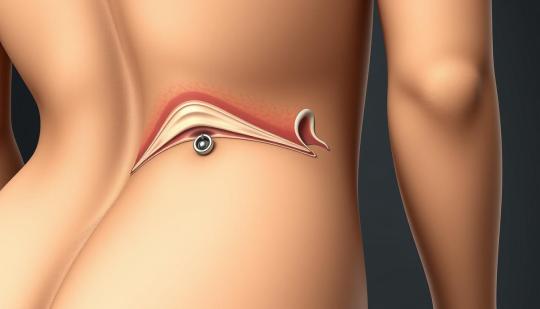
In today's fast-paced world, people are seeking more natural and holistic ways to care for their health—whether it’s about strengthening the immune system, managing high blood pressure, or choosing the right breakfast on the go. Let’s dive into powerful, natural approaches that touch on everything from eye teratomas to lower back dermal piercings, and even blood type O diets.

🌿 How to Boost Immunity Naturally?
Your immune system is your body’s first line of defense. Strengthen it with:
Vitamin C-rich foods: Citrus fruits, bell peppers, kiwi
Zinc sources: Pumpkin seeds, seafood (especially oysters!)
Sleep & stress control: Aim for 7–9 hours per night, meditate daily
Probiotics: Yogurt, kefir, and fermented foods support gut health, key to immunity
Natural herbs like echinacea, elderberry, and turmeric also support immune response without harsh chemicals.

🧘♂️ Holistic Cure for High Blood Pressure
A holistic approach to high blood pressure involves lifestyle, nutrition, and stress control:
Exercise regularly: Even brisk walking 30 minutes a day makes a big difference
Reduce sodium: Stick to 1,500 mg a day or less
Relaxation practices: Yoga, breathwork, and acupuncture may reduce systolic pressure
Herbs like garlic, hibiscus, and flaxseed: Nature’s own blood pressure regulators
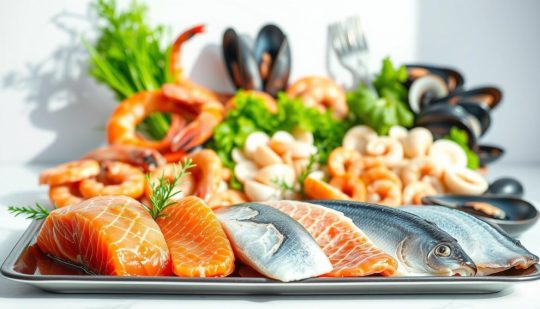
🐟 What Are the Health Benefits of Seafood?
Seafood is a powerhouse of nutrients:
Omega-3 fatty acids: Good for heart, brain, and inflammation
Lean protein: Supports muscle repair and keeps you full longer
Iodine & selenium: Support thyroid function
Vitamin D: Especially in salmon, vital for immune health
Bonus: Regular seafood intake is linked to a lower risk of Alzheimer’s.
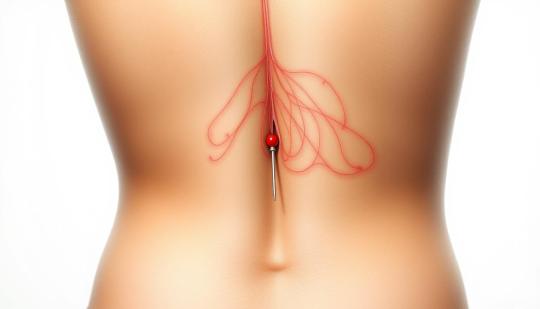
💎 Lower Back Dermal Piercings: Are They Safe?
Lower back dermal piercings, often called "venus piercings," are more than just a style statement. Here’s what to consider:
Safety: Always get it done by a licensed professional
Healing: Takes 1–3 months; requires diligent aftercare
Risks: Potential for infection, rejection, or irritation from clothing
Natural remedies like diluted tea tree oil may help soothe irritation—always check with your piercer first!
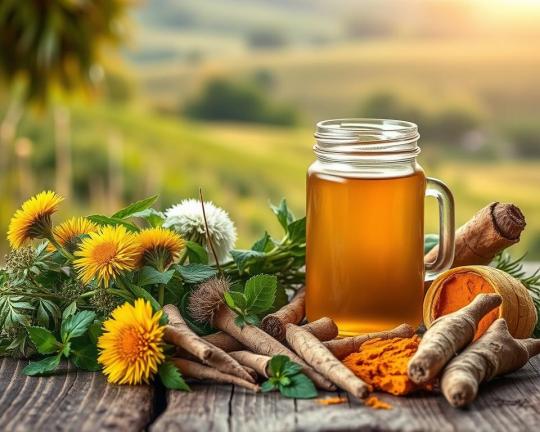
🏠 Home Remedies That Actually Work
Some home remedies have stood the test of time:
Honey + ginger: Soothes sore throats and aids digestion
Aloe vera gel: Treats burns, acne, and dry skin
Apple cider vinegar: Balances pH, supports digestion, and can help with dandruff
Always remember—natural doesn't always mean safe. Test remedies on a small area first!
🍳 Nutritious Fast Food Breakfast: Is It Possible?
Yes! Here are nutritious fast food breakfast options when you're in a rush:
Egg White Grill (Chick-fil-A): High in protein, low in carbs
Oatmeal (Starbucks or McDonald's): Ask for it without added sugar
Greek yogurt parfaits: Watch for added sugar, but they offer protein and probiotics
Breakfast burritos (customized): Choose whole grains, eggs, and veggies
Pair it with green tea or water to avoid sugary drinks.
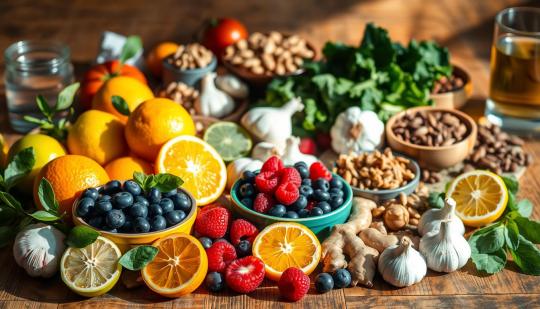
🩸 What Are the Best Foods for Blood Type O?
For those who follow the Blood Type Diet, Type O individuals thrive on:
High-protein meals: Lean meats, seafood, and veggies
Avoid grains and legumes: Especially wheat, corn, and kidney beans
Great foods: Spinach, broccoli, seaweed, and olive oil
Limit: Dairy and caffeine, as they may not digest well
This diet isn’t for everyone, but many say it helps with energy and digestion.
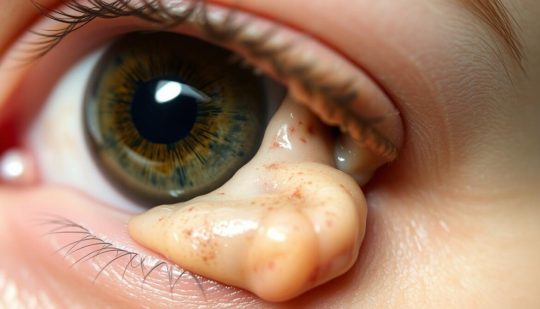
️ Eye Teratoma: What Should You Know?
Eye teratomas are rare tumors that can contain multiple types of tissue (like bone, hair, or muscle). While alarming, many are benign. Treatment often involves surgical removal. It's a reminder of how important regular checkups and early diagnosis are, even in unlikely areas like the eye.
Conclusion
Living a holistic lifestyle doesn't mean giving up modern convenience. Whether you're rocking lower back dermal piercings, seeking natural ways to manage high blood pressure, or picking a quick, healthy breakfast at a drive-thru, there are balanced, mindful options for every path.
Have you tried any of these methods or foods? Share your story or tips below!
#home remedies#eyetreatment#liverdisease#health and wellness#healthcare#health & fitness#nutrition#wellness#healthylifestyle#high blood pressure
7 notes
·
View notes
Text
ProDentim: A Proven Solution for Healthy Teeth and Gums
ProDentim: A Proven Solution for Healthy Teeth and Gums

Maintaining good oral health is a top priority for many people, but finding a product that truly supports the health of your teeth and gums can be challenging. ProDentim is a cutting-edge oral health supplement that offers a natural, science-backed approach to supporting your teeth and gums while promoting overall oral wellness.
What Exactly is ProDentim?
ProDentim is a unique dietary supplement designed to help improve and maintain the health of your teeth and gums. Unlike traditional dental products such as toothpaste and mouthwash, which focus on surface-level cleanliness, ProDentim works from the inside out, addressing the root causes of common dental issues like plaque, gum disease, and bad breath.
This supplement contains a potent blend of 3.5 billion probiotic strains and essential nutrients that promote a healthy oral microbiome. By balancing the bacteria in your mouth, ProDentim helps improve oral hygiene and contributes to better overall health.
How Does ProDentim Work?
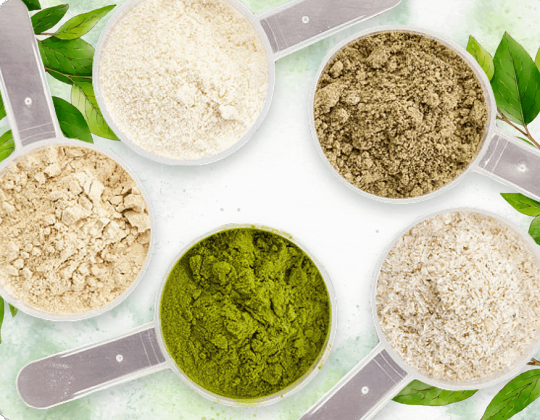
Some of the key ingredients in ProDentim that contribute to its effectiveness include:
Lactobacillus Paracasei — This powerful probiotic helps maintain a healthy balance of bacteria in the mouth, reducing inflammation and improving overall dental health.
B.lactis BL-04 — This probiotic strain supports a healthy immune system, which in turn benefits both your teeth and gums while also aiding digestive health.
Inulin — A prebiotic fiber that nourishes probiotics and ensures they continue to thrive, supporting both oral and gut health.
Peppermint — Known for its antibacterial and refreshing properties, peppermint helps promote clean breath and good oral hygiene.
Malic Acid — This natural compound helps to whiten teeth and maintain a healthy mouth by supporting overall dental hygiene.
By addressing both the oral microbiome and digestive system, ProDentim provides a comprehensive solution for optimal oral health.
Benefits of ProDentim
ProDentim is not just another oral care supplement — it offers a range of proven benefits that contribute to long-term dental health. Some of the top benefits include:
Enhanced Oral Hygiene: ProDentim supports the reduction of harmful bacteria in the mouth, which helps prevent plaque buildup, tooth decay, and gum disease.
Stronger Teeth and Gums: The probiotics in ProDentim help strengthen tooth enamel and promote healthy gum tissue, reducing the risk of gum recession and tooth sensitivity.
Fresher Breath: By balancing oral bacteria, ProDentim eliminates the source of bad breath, giving you long-lasting fresh breath naturally.
Gut Health Support: The probiotics in ProDentim not only improve your mouth’s health but also contribute to better digestion, ensuring your body absorbs nutrients more efficiently and promotes overall well-being.
Natural, Safe Formula: ProDentim is made from natural ingredients that are free from harmful chemicals, making it a safe and effective option for maintaining oral health.
Who Should Consider Using ProDentim?

With its combination of probiotics and natural ingredients, ProDentim provides a holistic solution to oral care that can benefit people of all ages.
How to Use ProDentim
Using ProDentim is simple. Just chew one soft tablet daily. The supplement is designed to be taken at any time of day, whether on an empty stomach or after meals. Since ProDentim is made from natural ingredients, it’s gentle on your system and can easily be incorporated into your regular wellness routine.
Conclusion
ProDentim is transforming the way we approach oral health. Its innovative formula, combining probiotics with essential nutrients, offers a comprehensive way to support healthy teeth and gums while enhancing overall wellness. Whether you’re looking to prevent common dental issues, improve your smile, or boost your gut health, ProDentim provides a natural and effective solution.
By adding ProDentim to your daily routine, you can enjoy stronger teeth, healthier gums, fresher breath, and improved digestion. It’s time to take charge of your oral health and experience the benefits of ProDentim for yourself!
#dentist#teeth#teeth whitening#sweet tooth#vitamins#healthcare#health and wellness#health & fitness#healthylifestyle#medicine#physical health#wellness#mouthwashing#sexy mouth#smile#tongue
7 notes
·
View notes